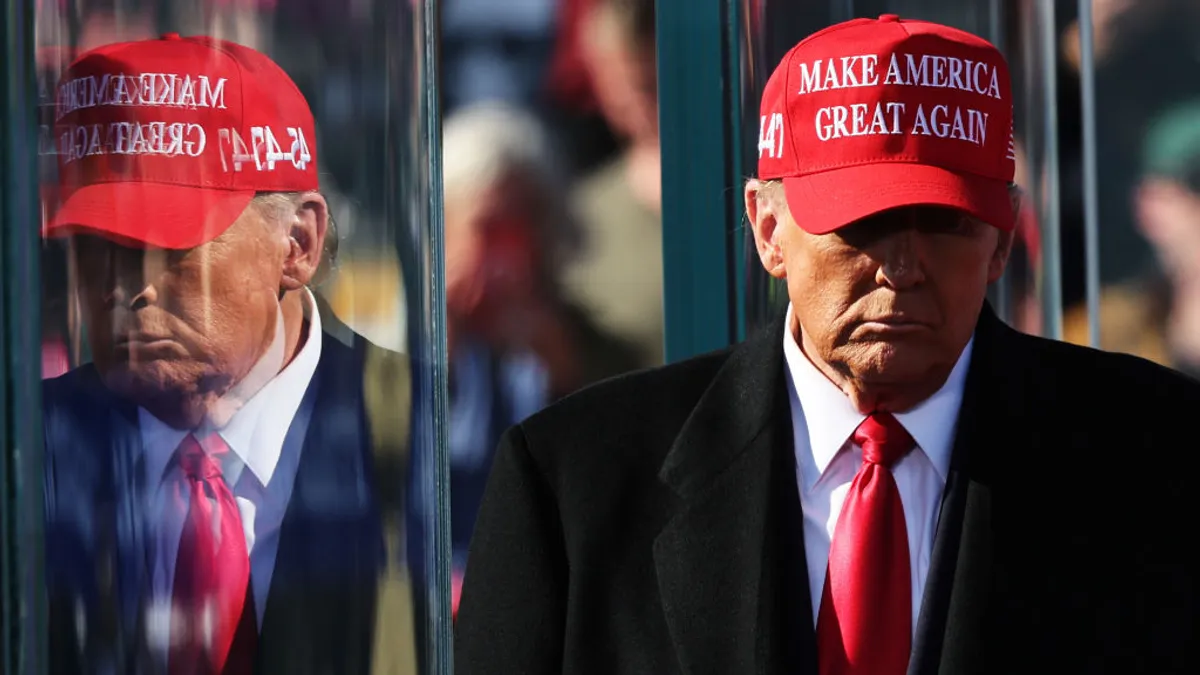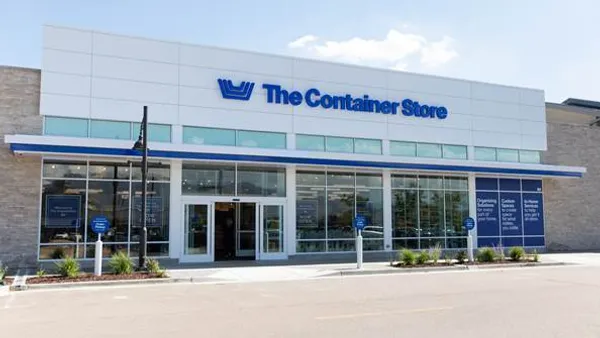A second Trump administration is set to usher in a fresh period of volatility for retailers, according to several analyst reports Wednesday.
“For retail, a Trump victory brings a mixed bag of positives and negatives, with a large dose of uncertainty,” GlobalData Managing Director Neil Saunders said in emailed comments.
Tariffs are in focus, given their effects on the operations of retail segments as well as on the consumer. And new levies on imports, especially at the levels proposed by Trump during the election, could once again spur inflation, as retailers pass on higher prices to their customers.
Wells Fargo economists Jay Bryson and Michael Pugliese said that Trump’s 10% across-the-board tariff on U.S. trading partners and his proposed 60% tariff on China “would impart a modest stagflationary shock to the U.S. economy in 2025,” and estimated that the core consumer price index inflation rate next year would surge from 2.7% to 4%.
The Federal Reserve is also unlikely to continue its rate cut policies, and unemployment will likely rise if countries retaliate with their own tariffs, they said.
“Under this scenario, U.S. real GDP would rise by a sluggish 0.6% in 2025,” they said, adding that even if tariffs aren’t implemented at the levels Trump has proposed, they are raising their inflation forecast for next year.
During the election, Trump promised lower interest rates — a major consumer concern that some pundits believe influenced the outcome Tuesday — though Saunders noted that rate-setting is not within a U.S. president’s purview. Trump could unilaterally spike tariffs, however, as Congress long ago delegated trade policy to the executive branch, analysts said.
Retailers and consumers are ill-equipped to weather the fallout from tariffs, according to a report from the National Retail Federation released just ahead of the election. Shoppers would likely pay $13.9 billion to $24 billion more for clothing; $8.8 billion to $14.2 billion more for toys; $8.5 billion to $13.1 billion more for furniture; $6.4 billion to $10.9 billion more for household appliances; and $6.4 billion to $10.7 billion more for footwear, according to that study, which was prepared by Trade Partnership Worldwide.
In all, U.S. consumer spending power could weaken by between $46 billion and $78 billion annually, according to that report.
Dollar stores are especially vulnerable to tariffs, while Walmart and Target are best positioned to withstand their effects, according to Wells Fargo analysts led by Edward Kelly. Higher interest rates would dampen the housing market and retailers selling home goods would take a hit, Saunders said.
“The increased costs as a result of the proposed tariffs would be too large for U.S. retailers to absorb and would result in prices higher than many consumers would be willing or able to pay,” the NRF said.
Tax cuts could provide relief to consumers and retailers alike, though tax relief from the first Trump era would be renewed rather than brand new, and are essentially baked in, experts said. Those, too, carry risks, however, including widening the deficit and boosting inflation, according to the Wells Fargo economists.
The Federal Trade Commission is likely to change its tune in many arenas, most notably mergers, under a Trump presidency, Saunders said. Deals blocked by the FTC this year include Tempur Sealy’s proposed takeover of Mattress Firm, and Tapestry’s proposed merger with Capri.
Still, these consequences will unfold somewhat incrementally.
“Despite the shock change, it should be noted that changes happen at the margins and occurs over time,” Saunders said. “A second Trump administration will not collapse retail, nor will it propel it to dizzy heights. It will simply change the gradient of the trajectory and the tonality of the policies retailers need to deal with.”













